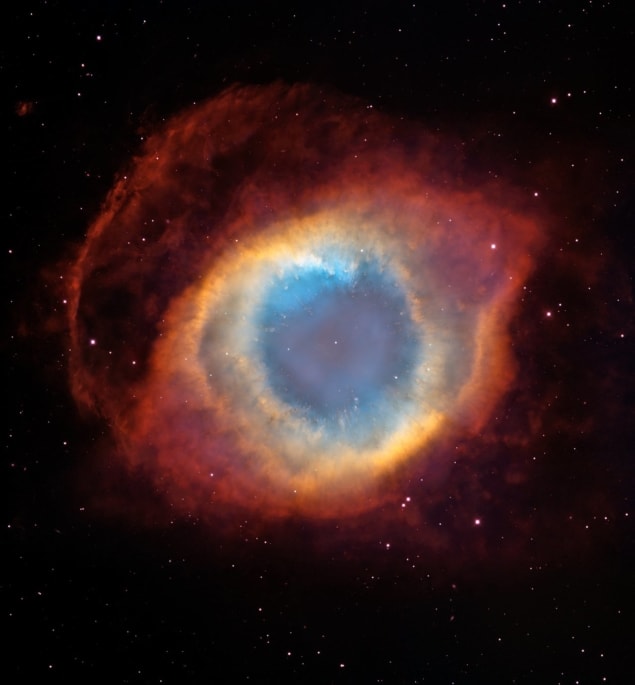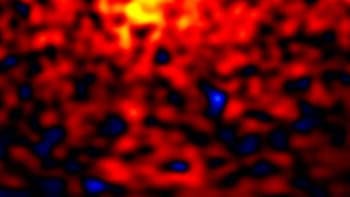The Hubble Space Telescope was launched on 24 April 1990. To celebrate its 30th anniversary in space, Physics World is publishing a series of blog posts exploring Hubble’s 10 best images, as chosen by the science journalist and editor Keith Cooper

Star death is a puzzle. We understand the broad strokes of what it entails – the most massive stars explode in an incandescent supernova, while smaller stars on the scale of our Sun expand into red giants and shed their outer layers to form a planetary nebula around their inert white dwarf core. What we are missing is some of the details. Planetary nebulae can adopt a variety of wonderful shapes, but what produces those shapes?
Take this Hubble image of the Helix Nebula, which is a planetary nebula about 650 light years away. From our orientation, it appears doughnut-shaped with the white dwarf in the hole at its centre. However, Hubble helped show that this shape is an illusion. What we’re really looking at is two discs of gas and dust almost perpendicular to one another. One popular theory is that complex planetary nebulae like these are the product of binary star systems, where a companion star ends up sculpting the material coming off its dying partner.

Hubble’s best shots: Light echoes from V838 Monocerotis
One more thing: look closely and you can see strange objects around the circumference of the illusory doughnut shape. They look a bit like comets, and are known as “cometary knots”, but they are far too large to be globs of ice and dust. Instead, they are dense globules of gas in the nebula.



